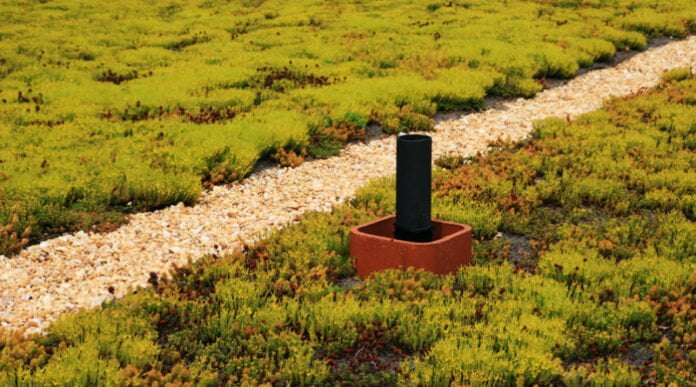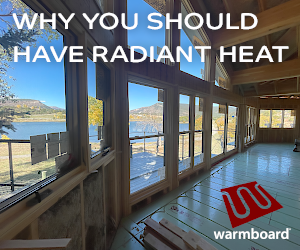The reality for most urban dwellers in Denver is that their views will more likely be of concrete roofs than mountain vistas.
On Oct. 29, the city council approved unanimously the final ordinance requiring green roofs on buildings of 25,000 square feet and larger, according to Jennifer Bousselot, a professor of horticulture and landscape architecture at Colorado State University and a member of the Green Roofs Review Task Force.
Denver has an inventory of about 15,000 buildings that meet the minimum square footage requiring building owners to install a green roof, Bousselot said.
Bousselot said in a session at the Colorado WaterWise Symposium on Thursday that for “remarkably little water cost,” green roofs can provide a litany of benefits that go beyond a pretty view for tenants.
Denver Water, which is also on the task force, conducted an independent analysis that found irrigating a green roof only increased water use by 1.15% even at peak use.
The rationale behind green roofs, Bousselot said, is that as urbanization consumes more land area and as population increases, particularly in cities, impervious surfaces will increase, limiting water flow into soil and increasing runoff of polluted water into waterways.
Impervious surfaces also increase temperatures in the area, causing an urban heat island that is 10 degrees hotter than surrounding areas.
“Vegetation is one of the key ways to mitigate some of these things,” Bousselot said.
Other benefits include improved energy efficiency, increased biodiversity, carbon sequestration and increased longevity of the roof membrane by limiting exposure to UV light and the shrink-swell cycle as temperatures change.
RELATED: Build Green with Net-zero Water Strategies
Bousselot said we can reduce membranes in landfills by at least two-thirds by greening more roofs. She said that membranes on green roofs can last between three and seven years longer than a traditional membrane
Intensive vs. extensive green roof
An intensive green roof uses deep substrate of at least six inches. “They’re not terribly common because they’re very, very expensive,” Bousselot said. Intensive roofs account for only 5% of installations worldwide, she noted.
Most contractors who take on green roofs will be installing extensive roofs, which are lighter and more suitable for retrofitting on existing roofs.
Substrate on extensive roofs is generally under six inches and typically weigh about 25 to 30 pounds per square foot, she said.
Intensive systems need as much maintenance as any other landscape, but extensive systems only require one to two visits per month during the growing season, Bousselot said. “Plus you have to do annual checks on the drains, things like that,” she added.
Bousselot noted that green roofs and solar panels have a “symbiotic” relationship. The solar panels provide winter protection, keeping snow on the vegetation to help with irrigation, and providing shade and protection from high winds.
Solar panels work best at 75 degrees Fahrenheit, Bousselot said, but urban roofs can reach 170 degrees in the middle of summer.
“By that point they are off,” she said of solar panels. “They can’t handle that kind of heat and produce energy.”
However, through evapotranspiration, the plants on a green roof cool the area to the ambient temperature “plus or minus a couple of degrees,” according to Bousselot. “That means the solar array on top of a green roof the actually stays functioning on a hot summer day when our peak demand is the greatest.”
There isn’t a good baseline for how plants respond to water deficits on green roofs, according to Bousselot. She conducted a water deficit trial that examined 15 different species on an extensive green roof.
Succulents survived dry periods better than herbaceous plants—”not a terrible shock, but we found some quantities that were very informative,” she said.
Succulents had viable foliage for five times longer than herbaceous plants, Bousselot found. In general, herbaceous plants lasted 18 days compared to succulents, which lasted the entire 151-day trial.
Another finding was that succulent roots were nearly twice as likely to revive after dry down than herbaceous plants.
“There’s a very good reason why most of the green roof pictures you see have predominantly succulent plants,” she said.







